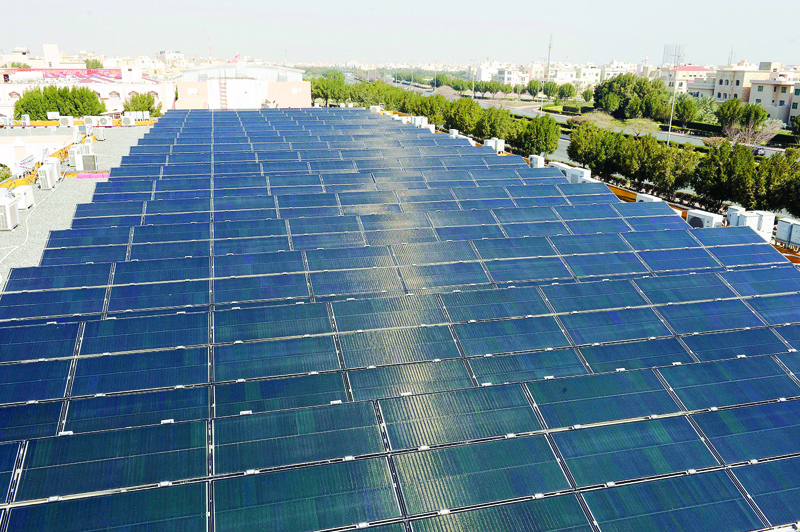
KUWAIT: The annual World Future Energy Summit recently held in Abu Dhabi brought together tens of thousands of participants from 170 States and representatives of hundreds of companies. The conferees are particularly concerned with renewable energy and investment in emerging Middle East markets, at a time future energy has become a main stimulant for economic growth, in the shadow of billions of dollars' worth of prospected investments - promoted by the summit.
Kuwait, a country situated in the northern Arabian Gulf, is quite qualified for harnessing 'green energy,' with available solar and wind energy for long times throughout the year. Such abundant resources make it prepared to meet mounting energy demand and establishing a more sustainable and diversified economy. Given these raw potentials came His Highness the Amir Sheikh Sabah Al-Ahmad Al-Jaber Al-Sabah's visionary strategy, designed to diversify used energy in Kuwait, where renewable resources should constitute 15 percent.
Local stakeholders had already scrambled into action to materialize His Highness the Amir's vision, inaugurating, last year, the mega power Al-Shagaya complex to cover some of the local energy needs. The venture, located in the region of Al-Dibdibah and launched by Kuwait Petroleum Corporation (KPC) to generate 1,500 MW of energy, envisages securing 23 percent of the oil sector energy needs from solar power, in the first year of operations-sparing more than five million of the fossil fuel-as part of the oil sector approach to secure 20 percent of its energy needs from renewable resources.
'Sedra 500' project
Kuwait took first steps for harnessing the solar energy in 2016, when Kuwait Oil Company (KOC) kick started the 'Sedra 500' project to generate energy for electrical pumps in Umm Qadir field, West Kuwait, where half a million barrels of oil will be reserved in the next two decades. In March, the KOC, a subsidiary of Kuwait Petroleum Corporation (KPC), declared a plan to employ the solar energy for extracting 60,000 barrels of oil per day, as a first phase-prospected to jump to 350,000 bpd.In this vein, the (consultancy company) Oxford Business Group had advised that Kuwait should build more renewable energy stations noting that its needs for power would jump from 30,000 MW to much higher levels.
Billy Fitzherbert of the Middle East Editor at Oxford Business Group (OBG) said in an interview that Kuwait's development blueprint, the New Kuwait Vision 2035, has set a 15 percent contribution target of renewable energies to the country's energy mix by 2030. This target is broadly in line with those set out by other countries in the region. He added, "These efforts are set to significantly alter the balance of inputs that currently goes into generating electricity in the country."
Expanding Kuwait's renewable energy projects will help the country achieve multiple policy targets, which in turn will feed into future economic growth. By successfully reducing the amount of oil currently used to power electricity generation plants more resources will be made available for downstream added value processes in the energy sector.
Moreover developing the downstream and renewable segments falls in with the country's goals to diversify the economy away from an over-reliance on hydrocarbons. Finally, and as mentioned above, significant employment opportunities are set to arise for Kuwait's large youth population as a result of a successful expansion into renewable energies. Nick Butler of King's College in London & FT Energy policy commentator said, "There is great potential to develop a new industry and to substitute renewables for existing energy supplies, which could be exported."
Readily available
"The technology is readily available and local skills could easily be developed," Butler said. "Kuwait clearly has the financial resources. Low oil prices make some people think that switching to renewables would be costly for consumers. But the costs of renewables have fallen dramatically and switching makes economic sense. Kuwait needs to think about the longer term future, to diversify its economy and to move beyond being a country completely dependent on exporting oil. The development of renewables is one important part of that process."
Robin Mills, CEO of Qamar Energy, said the key issue is to move ahead with the next phase of the Shagaya renewable energy park, "which are much larger that the first phase." "Renewables contribute to increasing power supply, saving oil that can be exported, lowering required gas imports, and creating local employment," he said. "Kuwait has good solar conditions and plenty of flat, unused land in reasonable proximity to the city. It also has reasonable sources for wind power.
Electricity demand is growing fast, and power generated by oil or imported LNG is expensive compared to modern solar and wind power. Lower oil prices reduce economic growth and funds available for new projects. They also lower the cost of conventional oil/gas-fired generation (although solar is still cheaper now). However, lower oil prices also make it more urgent to diversify the economy and improve efficiency." - KUNA










